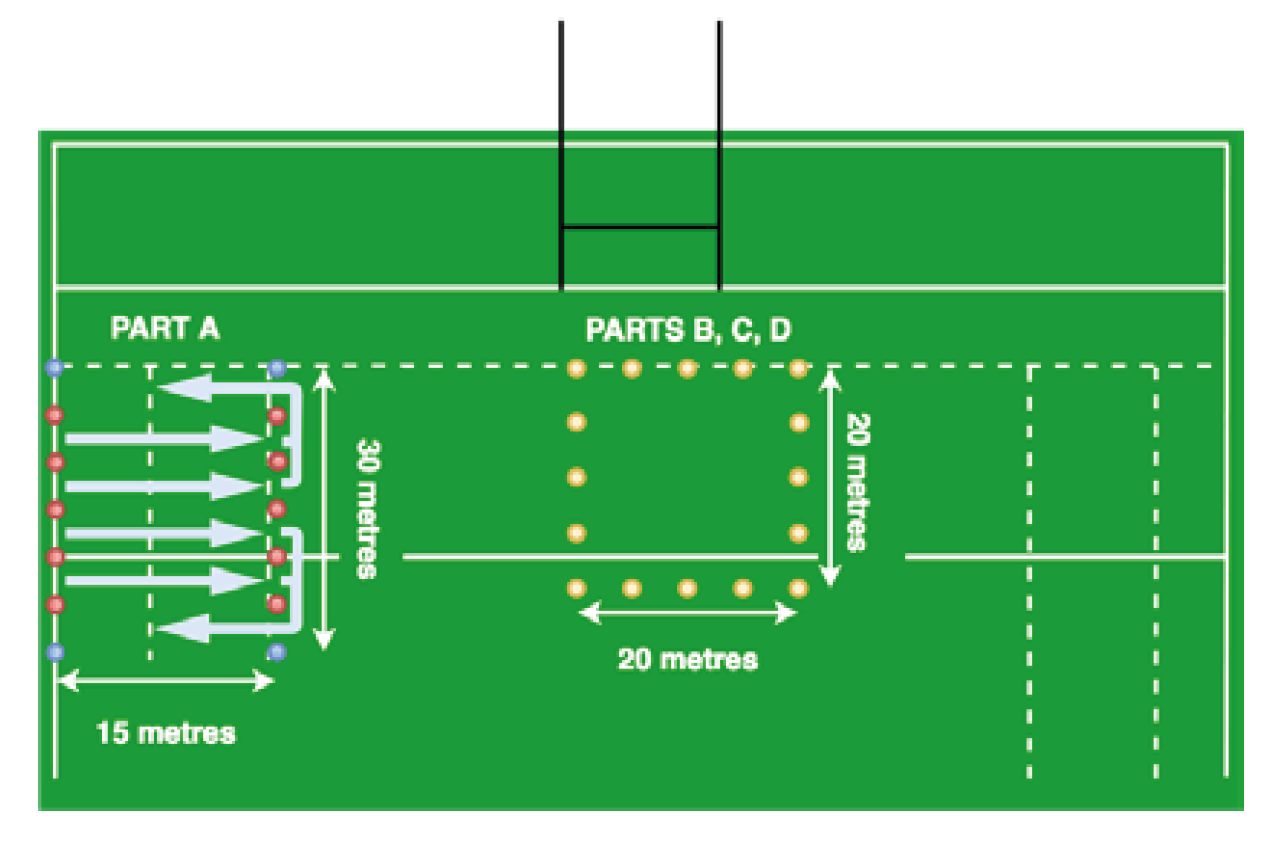What are the key points about using Activate that coaches should be aware of?
Activate can be used at start or during training sessions, as well as in pre-match warm-up. If completing the programme in a single block, the youth versions take 15-20 minutes, and the adult programme should take 20-25 minutes once players and coaches are familiar with the exercises.
All versions start with a running-based warm-up, followed by exercises to train and develop lower limb balance, strength, power, mobility, and control when landing and changing direction. While it is best to complete the activities on a natural or artificial turf pitch with plenty of space, a nonslip indoor surface (for example, a sports hall) can also be used.
Coaches should always check the area in which players complete the exercises is free of any potential hazards.

How should coaches set up their playing area to deliver Activate?
The image below provides a suggested pitch layout to use Activate, but coaches can adjust the playing area set up to suit their needs. Depending on the number of players taking part, it is possible to complete the entire programme in as little as a single 20-metre by 20-metre square, although having access to more space enables more variation in how the programme is delivered and more space in which players can practice the exercises.

What equipment is needed to deliver Activate?
Activate has minimal need for equipment. Setting up only requires some cones to mark the areas to complete the exercises. Many exercises in Activate are performed by players individually or in pairs, while the running-based activities are group-based.
Coaches can choose to introduce rugby balls or other available equipment if they feel it will make the exercises more purposeful and enjoyable for players but must see that players continue to complete the exercises properly. When players need to perform an activity for a time (for example, 30 seconds), it is best for someone other than the coach (for example, an assistant coach or player not taking part in the session) to keep time. This then allows the coach to focus on monitoring players’ technique.